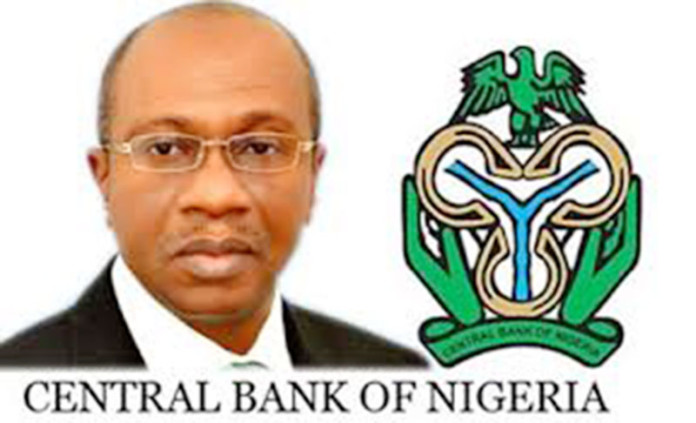By Ishaya Ibrahim
Nigerian banks posted varying results at the close of first quarter, reflecting slide in profits and other core banking transactions for the period covering January to March 2018.
The best performers released impressive numbers while the worst released results that signal bleak future for their banks.
In the last three quarters in 2017, the banking industry had enjoyed a momentous growth that contributed to Nigeria’s exit from recession.
Most of them could not sustain the gains they recorded that preceded their performance in the first quarter of the year and have therefore lagged in their first quarter of 2018 scorecard partly because the country’s Gross Domestic Product (GDP) itself slowed during the same period.
The first quarter GDP expanded by 1.95 percent, gained only 0.05 per cent growth from the previous quarter position of 1.90 per cent.
First quarter best performers
ZENITH
Zenith Bank is Nigeria’s biggest bank by asset base and has justified so by its first quarter result. The bank’s profit after tax for the first quarter was N47 billion, representing a 22 percent increase from its N37 billion performance in the first quarter of 2017.
Its interest income rose by 17 percent from N118,092,000 in the first quarter of 2017 to N142,612,000.
Total assets of Zenith bank grew to N5.68 trillion from N4.74 trillion recorded in the same period of 2017.
However, the bank’s Non Performing Loan (NPL) increased to 4.3 percent from 3.2 percent, which is still below the five per cent threshold stipulated by the Central Bank of Nigeria (CBN).




ECOBANK
Ecobank Transnational Incorporated (ETI) up its gross earnings by 11 percent, year-on-year (yoy). In 2017 first quarter, it was ₦178,388 billion. In 2018 first quarter, it moved to ₦198,615 billion
Its profit before tax moved by a significant 48 percent. In first quarter of 2017, it stood at ₦22,895 billion. In the first quarter of 2018, it jumped to ₦33,908 billion.
Ecobank has also announced that it has recovered a total of $20 million of bad loans, while NPL ratio stands at 10.7 per cent at the end of 2017.
UBA
Although the United Bank for Africa (UBA) was not so exuberant in the first quarter of 2018, its result was however modest.
It scored high in gross earnings which rose by 17.89 percent from N101.3 billion in Q1 2017 to N119.4 billion in Q1 2018.
Its profit after tax rose by 6.2 percent. It leaped from N22.4 billion to N23.7 billion
The bank’s net interest income was N53.6 billion in Q1 2018 against N51.6 billion in Q1 2017.
The total assets of UBA in Q1 2018 stood at N4.3 trillion from N3.7 trillion in Q1 2017.
FIDELITY BANK
Fidelity Bank’s performance in first quarter of 2018 was fair. Its pretax profit for the first quarter ended March 31, 2018 increased by 2.7 percent to N4.98 billion from N4.84 billion posted a year ago.
Gross earnings surged from N40.84 billion in the Q1 period of 2017 to N43.68 billion declared in the review period of 2018; indicating a rise of 6.9 percent.
Its NPL ratio declined to 6.3 percent from 6.4 percent in 2017 financial year.
Not so impressive performers
ACCESS BANK
Access Bank had less impressive outing in first quarter, increasing its gross earnings by 19 percent, which rose from N116 billion to N137.5 billion. Its profit after tax declined from N22.4 billion to N22.1 billion.
The bank’s total assets inched forward by 7 percent, totaling ₦4.38 trillion from ₦4.10 trillion in December 2017.
Access Bank’s NPL is 4.7 percent, inching closer to the danger zone of 5 percent, which is bad for banking.
GTB
Guaranty Trust Bank (GTB) increased its profit after tax by 7.7 percent, which is N44.7 billion from N41.5 billion achieved in the corresponding period of 2017.
Net interest income of GTB decline to N59.7 billion in contrast to N66.1 billion recorded in the first three months of 2017.
The bank’s total assets stood at N3.5 trillion against the N3.4 trillion in the previous quarter.
GTB’s NPL is 6.15, 18 percent higher than regulatory threshold of 5 percent.
FCMB
Comparing FCMB’s result YoY, there was a positive movement. However, a quarter to quarter (QoQ) analysis will reveal a not too impressive outing.
First quarter 2018 gross earnings rose by 10 percent if compared to the performance of first quarter 2017. It was N38.4 billion in 2017 first quarter. It rose to N42.1 billion in 2018.
Profit after tax soared by 64 percent (yoy). It was N1.5 billion in 2017 first quarter. It rose to N2.5 billion in 2018 first quarter.
But when first quarter 2018 result is compared to the previous quarter, which is fourth quarter 2017, the results came in weaker with gross earnings down by 17 percent and profit after tax shedding 34 percent.
The worst performers
FIRST BANK
First bank had a rough quarter with many key indicators in the red. Its financial statement for the first quarter of 2018 shows that its gross earnings was down by 1.6 percent, Net-interest income down by 5.7, profit before tax down by 5.7 percent and profit after tax down by 8.6 percent.
First bank profit after tax was N14.8 billion against the N16.1 billion in the corresponding quarter of 2017.
Gross earnings was N138.9 billion against the N141.billion it posted in same quarter of last year, while net-interest income shrank to N75.7 billion from N80.3 billion in 2017 first quarter.
However, First bank’s total assets was up to N5.4 trillion, 2.3 per cent increase from previous quarter assets of N5.2 trillion.
Customers’ deposits increased to N3.2 trillion from previous quarter record of N3.1 trillion.
First bank has NPL of 21 percent, more than 300 percent above the industry ratio of 5 percent.
DIAMOND BANK
In the first quarter of 2018, Diamond Bank suffered a heavy setback. Profit before tax shank to ₦1.25 billion in Q1 2018 from ₦5.05billion in Q1 2017. This represents a 75 per cent decrease.
Profit after tax was ₦784 Million as against ₦4.29 billion recorded in Q1 2017.
The bank reported interest income of ₦38.13 billion for the quarter ended 31st March 2018 as against ₦38.65 billion recorded during Q1 2017. This represents a 1 per cent decline in interest income.
Like First Bank, Diamond Bank also has a massive NPL , which is 14.7, almost 200 percent above acceptable limit.
What the experts think
Investment banker, broker and managing director of Business Halmark, Teslim Shitta-Bey said part of the reasons the banks posted the kind of results they did was that the economy itself has not been growing majorly.
“The most recent growth for GDP is 1.95 percent, which means there was just an increase of 0.05 percent, which is just five basis point. Five basis point growth is slow. We have seen countries doing eight percent growth like Ghana. Smaller African countries do six and eight percent growth and our economy is just doing less than two percent, not forgetting the fact that population is growing at three percent.
“The service sector which is a key driver of economic growth has slowed significantly. The service sector produces a lot of the employment we are talking about. But it is still in recession,” he said.
Managing Director of Cowry Asset Management Limited, Johnson Chukwu, added another angle to the story. Chukwu said that in the first quarter, the banks could not make the kind of yield they were making from Treasury Bills.
Treasury Bills is short-term government borrowing from commercial banks.
In the first quarter of 2017, Chukwu said the yield on Treasury Bills was 18 per cent. By the first quarter of 2018, it had dropped to 11 per cent, reducing significantly the non-interest revenues of the banks.













